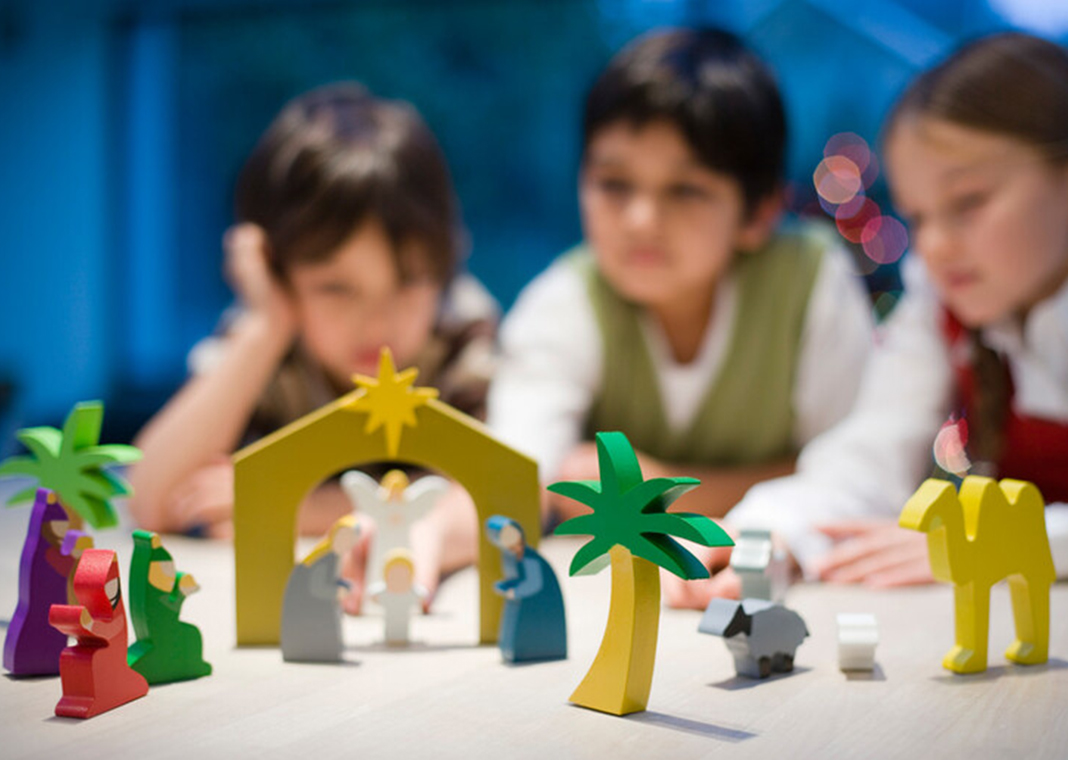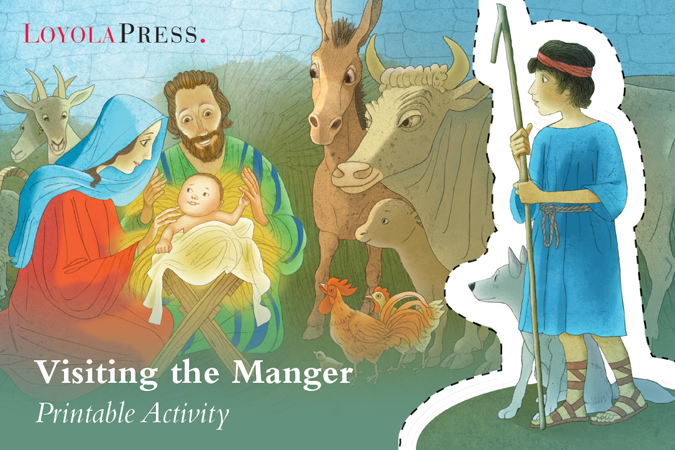
In one of my first years of teaching, one of the parish priests visited my fourth-grade classroom in December. He asked how many of the children’s families had displayed a crèche as part of their holiday decorations. None of the children said yes, which disappointed the priest, who left to visit another class. As soon as he left, one of the children asked me, “What’s a crèche?” I asked if others had the same question and realized that none of the children knew what a crèche was. When I told them it was a nativity set, or the statues of Joseph, Mary, and the baby Jesus, more than a few of the children said, “Oh, yea, we have one of those!”
Now I know to clarify a likely unfamiliar term before a classroom visitor leaves. It was a humbling lesson, but years later, even at a different parish and years since I’ve seen that particular priest, I now make sure I teach all my classes what a crèche is—and other key terms in the vocabulary of Christmas.
Terms young people should know include: Emmanuel, crèche, manger, swaddling clothes, shepherd, magi, frankincense, myrrh, and Epiphany. Here are a few ideas for methods to use in helping children understand these key terms related to the nativity narratives.
- Worksheets—Crossword puzzles or word searches can help in developing familiarity with words and are great as session starters while children gather. I use a Gospel look-up sheet, which invites young people to read the stories of Jesus’ birth and identify which elements of the story are found in Matthew or Luke. While it’s not a vocabulary sheet, working through the answers gives us time to pause and define terms as needed.
- Art—One year I had the kids draw on the board all of the elements of the Christmas story as they knew it. If doing this or any art project related to the nativity, talk about the vocabulary of Christmas as the children work.
- Source material reading—Read the stories in Matthew and Luke so the young people hear the infancy narratives in their fullness. Pause the story at various points to be sure children know what’s being talked about—do they know what a manger is when Mary lays the child in one? Do they know what it means when the magi paid homage to Jesus?
- Games—Play a game that reinforces the Gospel stories and their relevant terms. Children might play a matching game, Wheel of Words, or Pilgrim’s Progress to review terms.
These ideas, of course, can be adapted to help teach or reinforce vocabulary related to any faith formation topic. Do you have a favorite way to reinforce Catholic terms? How do you teach the young people you work with the vocabulary of Christmas?




Merry Christmas, Denise! Excellent article and ideas about teaching the youth about the vocabulary of Christmas. I especially like the idea of using artwork to explain and reflect on the Christmas story.
One “vocabulary” concept that I try to reinforce is that Christmas is a liturgical season in the Church, and not solely the feast day of December 25th.
With older CCD students, I think it is important to tie in the vocabulary of King, manger, Epiphany, Bethlehem, shepherds with people and events in the Salvation Story from the OT, and what Jesus will accomplish in His public ministry and Passion. I recently found a short excerpt on St. Augustine’s writings about Jesus lying in the manger as the “bread came down from Heaven” as our spiritual food, and the manger being a source of food for animals. This excerpt is from Pope Emeritus Benedict’s book about the Infancy of Jesus. Note also that “Bethlehem” translates from Hebrew to “place of bread”.
Thanks for sharing Denise. Christmas blessings and joy to you in you!
Merry Christmas, Mary! Reinforcing that Christmas is a season rather than one day is important. Why limit our celebration to only one day?